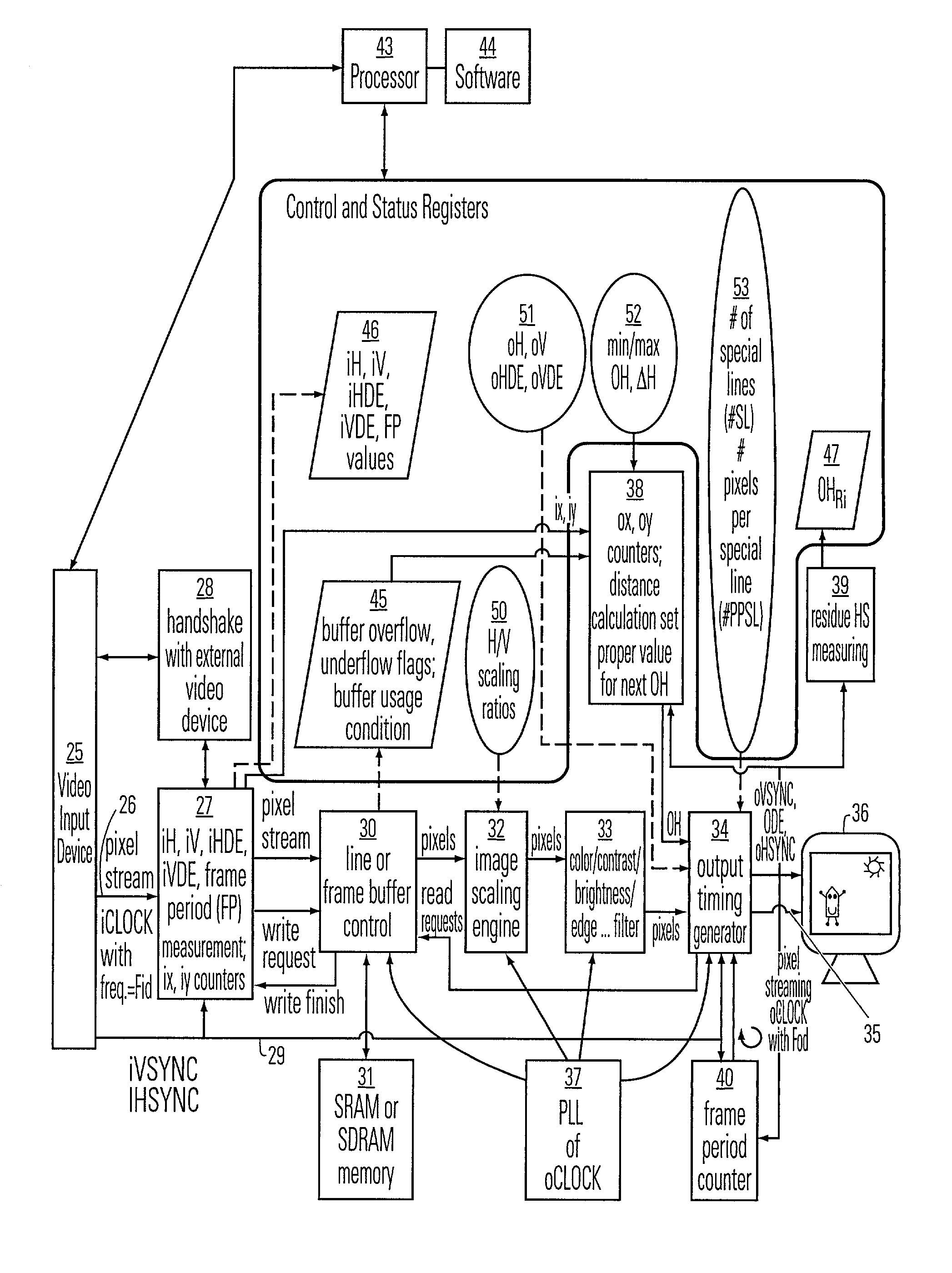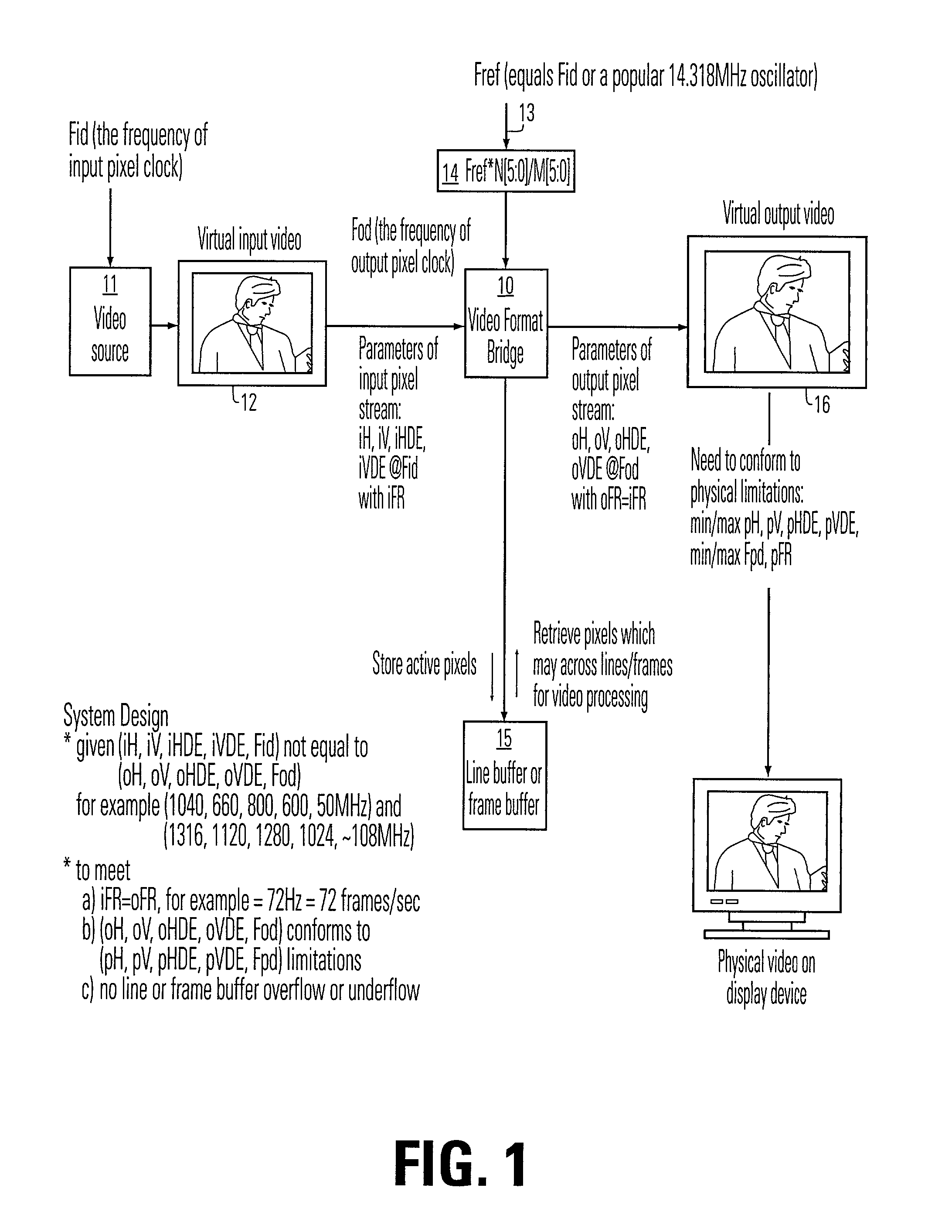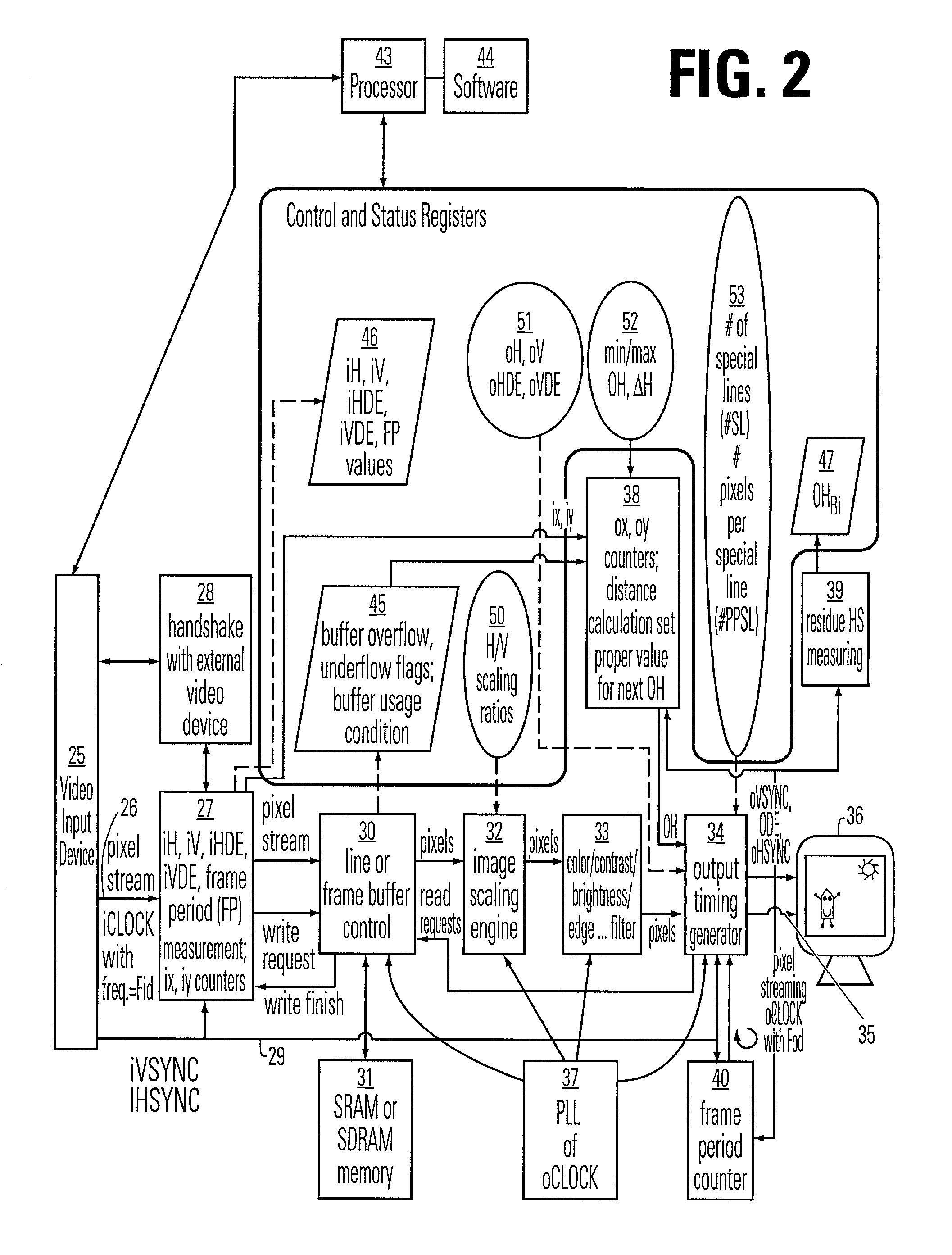Methods and apparatus for bridging different video formats
a technology of video signal and bridging method, which is applied in the field of video signal bridging process, can solve the problems of affecting the accuracy of the bridging process, the inability to match the the inability to achieve the matching of input and output clock rate, so as to achieve the effect of more precision
- Summary
- Abstract
- Description
- Claims
- Application Information
AI Technical Summary
Benefits of technology
Problems solved by technology
Method used
Image
Examples
Embodiment Construction
[0105]A detailed description of embodiments of the present invention is provided with respect to the figures. FIG. 1 is a basic illustration of system that includes a video format bridge 10 according to the present invention. The system accepts input from a video source 11, which is characterized as a virtual input video frame 12. The video source 11 has a input pixel clock Fid, and outputs the input video stream with the parameters iH, iV, iHDE, iVDE for a given input pixel clock Fid and input frame rate iFR.
[0106]A reference clock is supplied on line 13 to the clock generator 14. The reference clock may be supplied by crystal oscillator, such as the popular 14.318 MHz oscillator in common use, or may be derived from the input pixel clock Fid. The clock generator is implemented using a frequency divider having six bits of accuracy in this example. Thus, the clock frequency of the output video stream Fod is equal to the reference frequency Fref times the six bit value N[5:0] divided...
PUM
 Login to View More
Login to View More Abstract
Description
Claims
Application Information
 Login to View More
Login to View More - R&D
- Intellectual Property
- Life Sciences
- Materials
- Tech Scout
- Unparalleled Data Quality
- Higher Quality Content
- 60% Fewer Hallucinations
Browse by: Latest US Patents, China's latest patents, Technical Efficacy Thesaurus, Application Domain, Technology Topic, Popular Technical Reports.
© 2025 PatSnap. All rights reserved.Legal|Privacy policy|Modern Slavery Act Transparency Statement|Sitemap|About US| Contact US: help@patsnap.com



